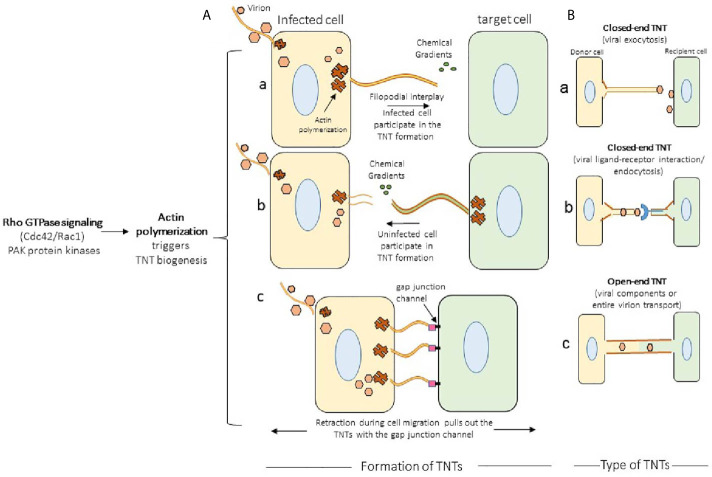Figure 2.
Mechanism of TNTs formation. (A) Actin polymerization together with Rho GTPase signaling leads to the formation of TNT bridges in which either infected cell (pane a; example, herpes simplex virus) or an uninfected cell (panel b; murine leukemia virus) forms the TNTs. The well characterized TNT biogenesis model in HIV and pseudo rabies virus (PRV) demonstrate the transient expression of cell adhesion molecules stabilizes the TNTs. The bridges of TNTs are also formed when the two connected cells retract during their migration resulting the formation of TNTs (panel c). (B) The types of TNTs. In closed-end TNTs, the cytoplasmic mixing between the donor and the target cells are not achieved, while in the open-end TNTs displays cytoplasmic continuity. Both type of TNTs aid in the viral spread, but it has been suggested that open-ended TNT leads to the generation of multinucleated giant cells.

